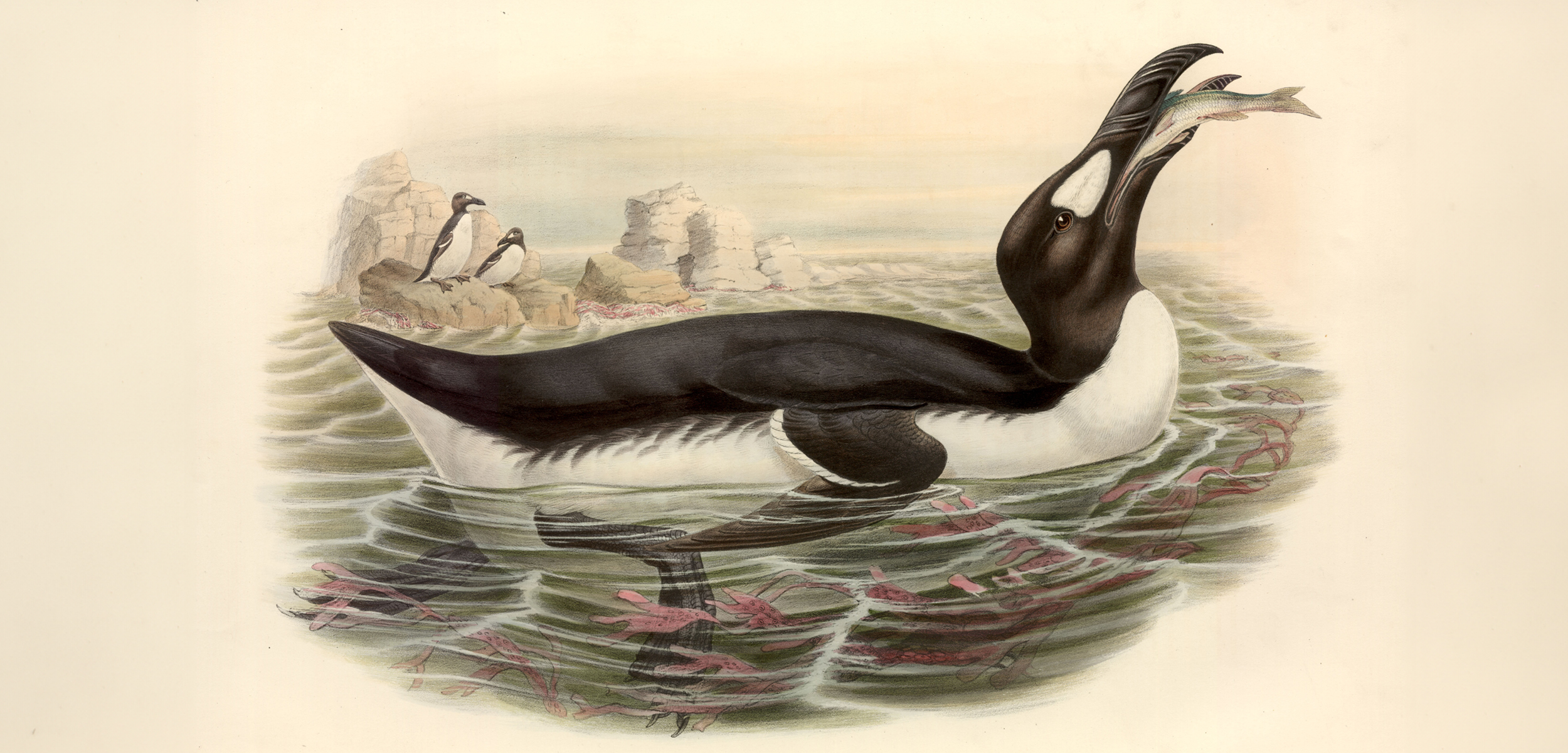Counting Calories for Seabirds
Calculating birds’ daily energy needs provides new details about the lives of extinct species—and may inform conservation for those at risk today.
Article body copy
One hundred and eighty years ago on a small Icelandic island, fishermen killed the last of the great auks. Related to puffins and murres, these flightless seabirds were huge, standing at half the height of an adult man. With the great auks went many of the most basic facts about them—from how many fish they ate each day to how far they ventured from their breeding colonies. Modern scientists, however, have developed a technique that can reconstruct lost details of the birds’ lives. More importantly, the technique could also help seabirds at risk of extinction today—particularly species that scientists know very little about.
Ruth Dunn was a PhD candidate at the University of Liverpool in England when she and her colleagues began developing a way to estimate the daily caloric needs of any seabird. “Seabirds consume millions of fish each year,” says Dunn, “but we know very little about their actual dietary needs, particularly outside the breeding season.”
The scientists compiled all the data they could find on how many calories different seabirds burn while flying, swimming, fishing, and doing other activities. Categorizing species into behavioral groups, such as “flap gliders” and “plunge divers,” the researchers estimated the average energy that each group needs for their various pursuits. Frigatebirds, for example, glide through the air and snatch fish from the ocean’s surface, while cormorants hunt underwater, propelling themselves with their feet—lifestyles that require very different amounts of oomph.
Dunn and her collaborators then created a series of formulas that use the typical amount of time a seabird spends on a variety of activities to calculate its daily energy budget.
To illustrate how well the approach works, the researchers turned to the hardest type of seabird to study: one that no longer exists.
To determine the great auk’s daily caloric intake, the team drew on information about the common murre, one of the extinct bird’s living relatives. But because the auk’s daily habits are still largely a mystery, Dunn and her colleagues couldn’t pinpoint an exact caloric need. Instead, they came up with a range. During the spring breeding season, auks probably spent most of their time tending nests on land, and a single bird would have consumed roughly 1,700 calories per day—equal to 34 sand lance, a small fish that was likely a common snack for auks. But throughout the rest of the year, their caloric needs may have been significantly higher. In winter, if auks remained in cold northern waters and spent most of their time at sea—as some seabirds do today—their energy needs would have ballooned to 2,300 calories per day. That’s equivalent to 49 sand lance, or about the same number of calories a human adult burns daily.
Previously, calculating a seabird’s energy requirement meant scientists had to track birds’ movements and metabolic rates in extreme detail—a task that’s too expensive and laborious to carry out for every species. By drawing on data previously collected on a diversity of seabirds, Dunn and her colleagues created formulas that scientists can apply to any seabird species. Dunn hopes researchers will use her work to calculate how much energy understudied seabirds need to survive, then apply that knowledge to conservation efforts.
For example, fisheries often compete with seabirds for fish, and in the case of threatened or endangered birds, this conflict for resources can make or break a population. In a 2023 study, researchers show that closing the North Sea sand eel fishery boosted the breeding success of the region’s black-legged kittiwakes by around 10 percent because the fledglings had more to eat.
The new technique for estimating seabirds’ needs could help fisheries managers assess whether the models they use to set fishing quotas leave enough food for seabirds. However, Lauren Scopel, a wildlife ecologist at the University of Illinois Urbana-Champaign who has studied the interactions between seabirds and fisheries, points out the dangers with Dunn’s formulaic approach. Fisheries managers, she says, could be tempted to adhere to numbers only within the formulas, which could lead to overfishing because other factors affect the health of seabird populations, not just caloric intake. But the formulas could also help fisheries managers assess how opening new fisheries might affect seabirds, Scopel adds.
Overall, the math may add up to a more seabird-friendly world well into the future.

